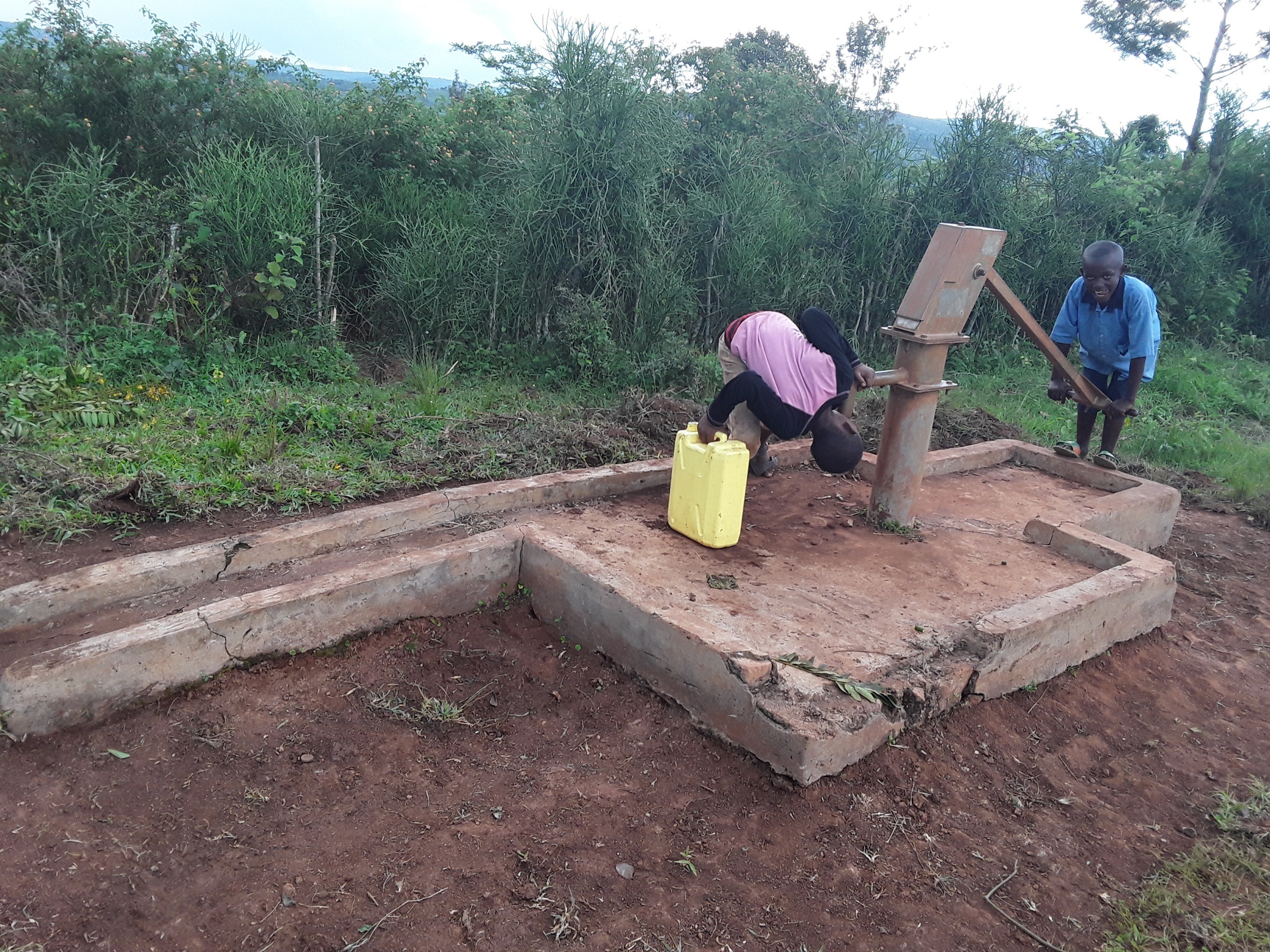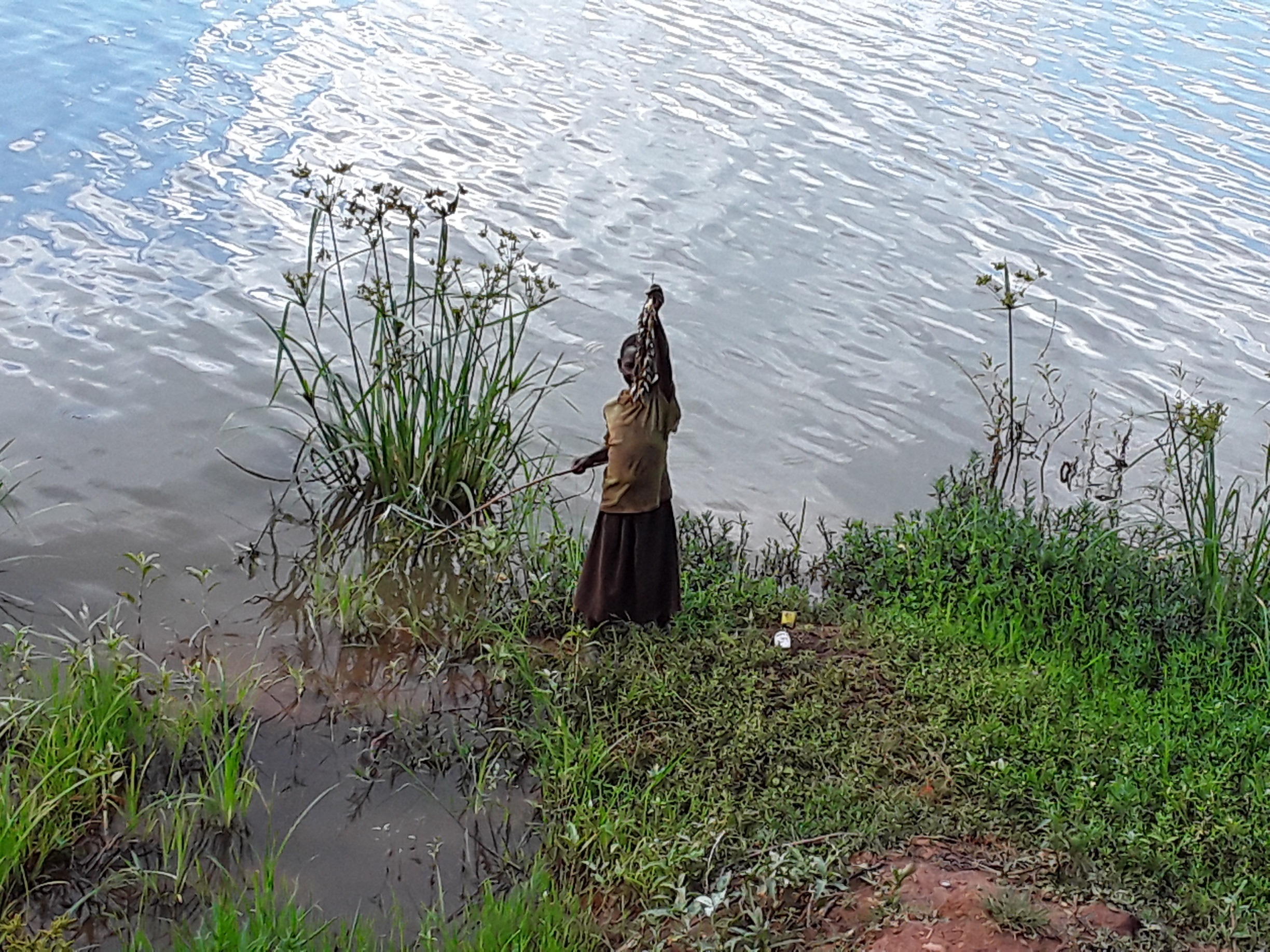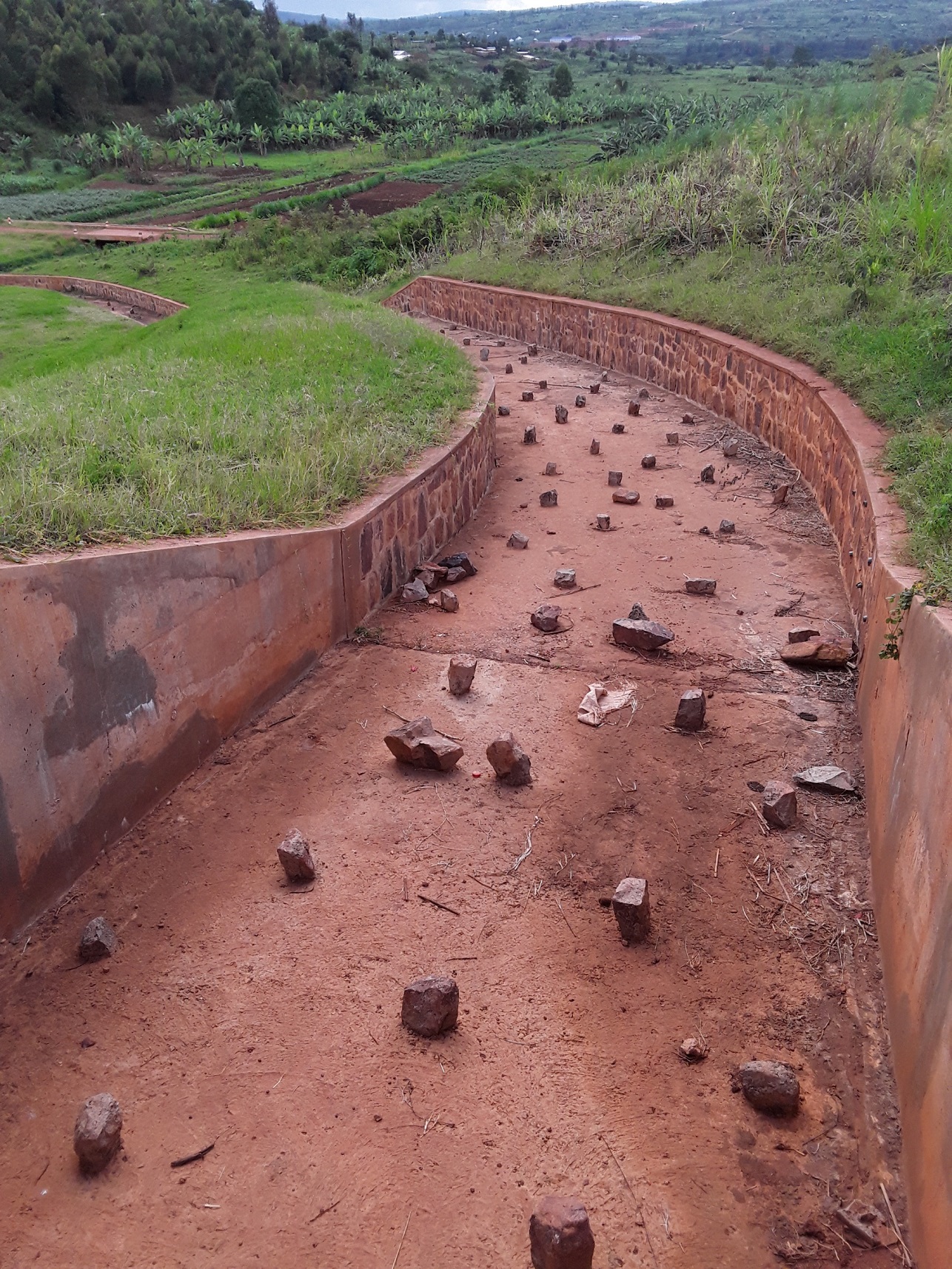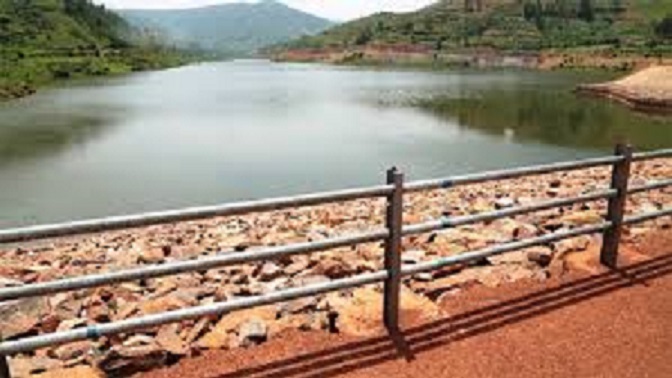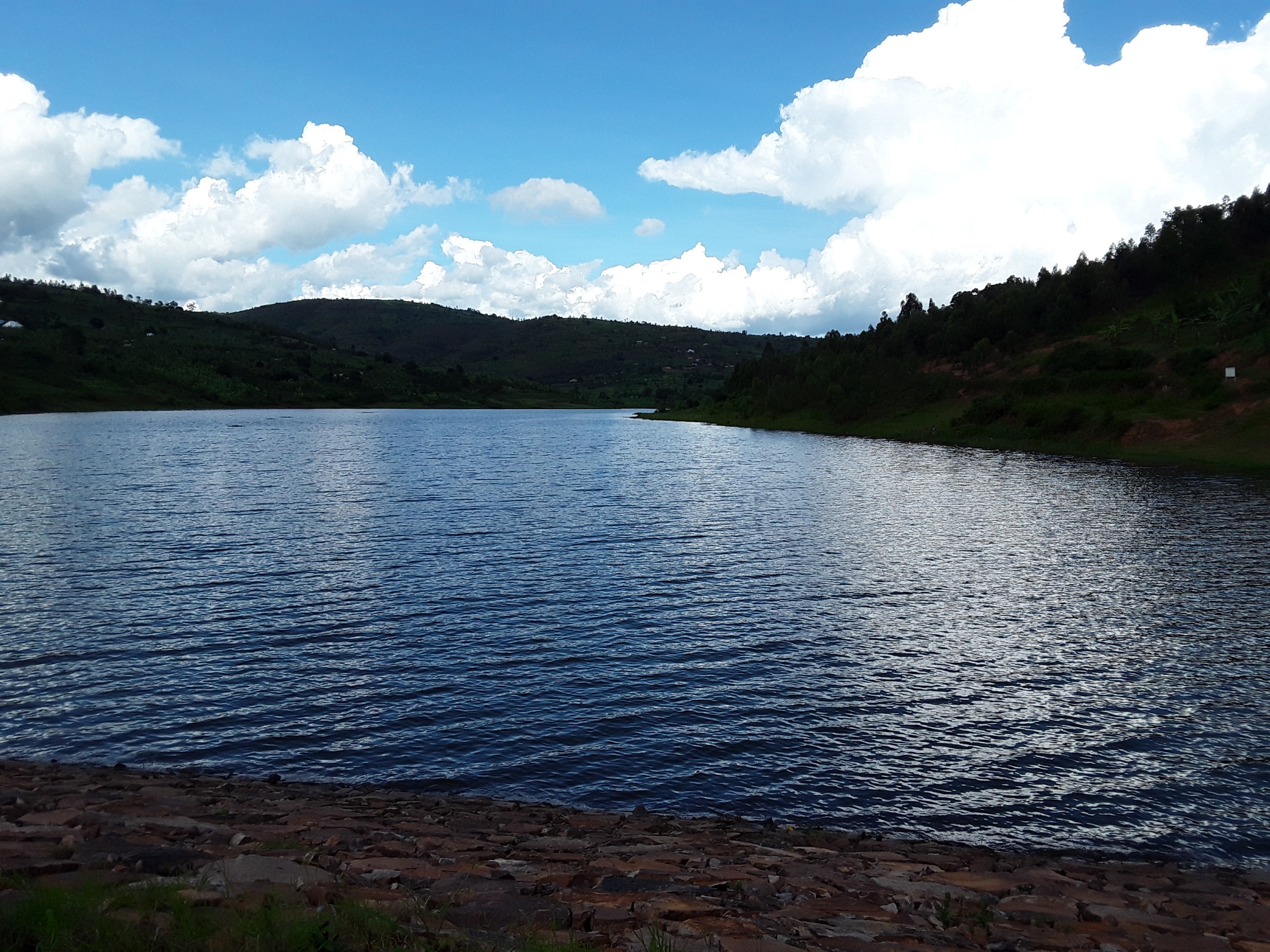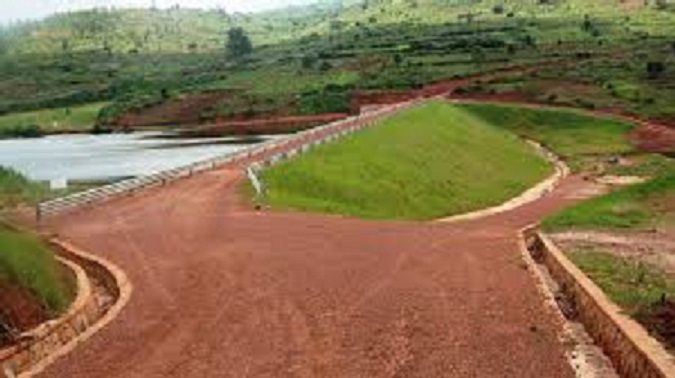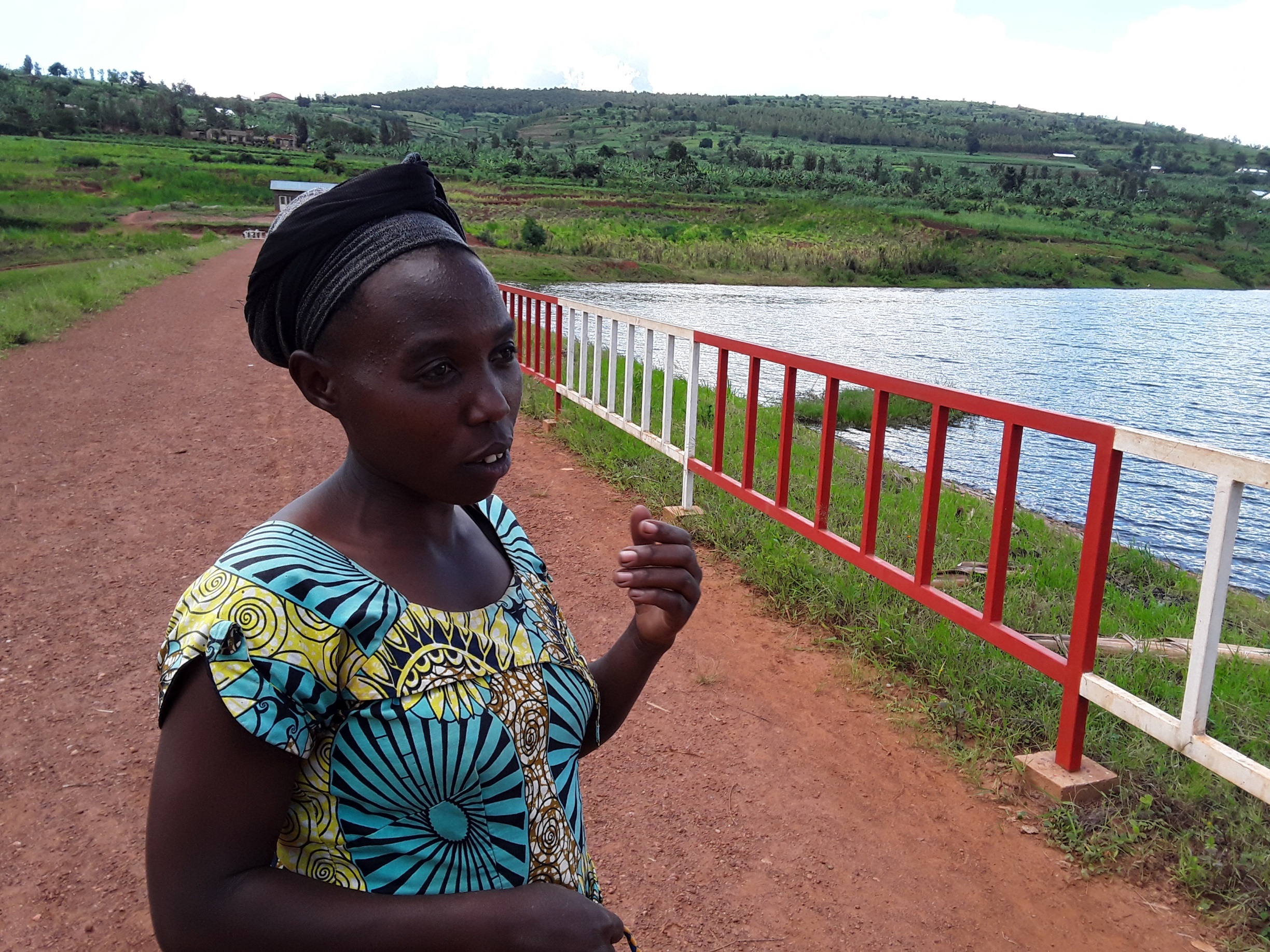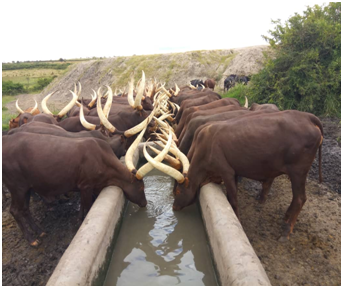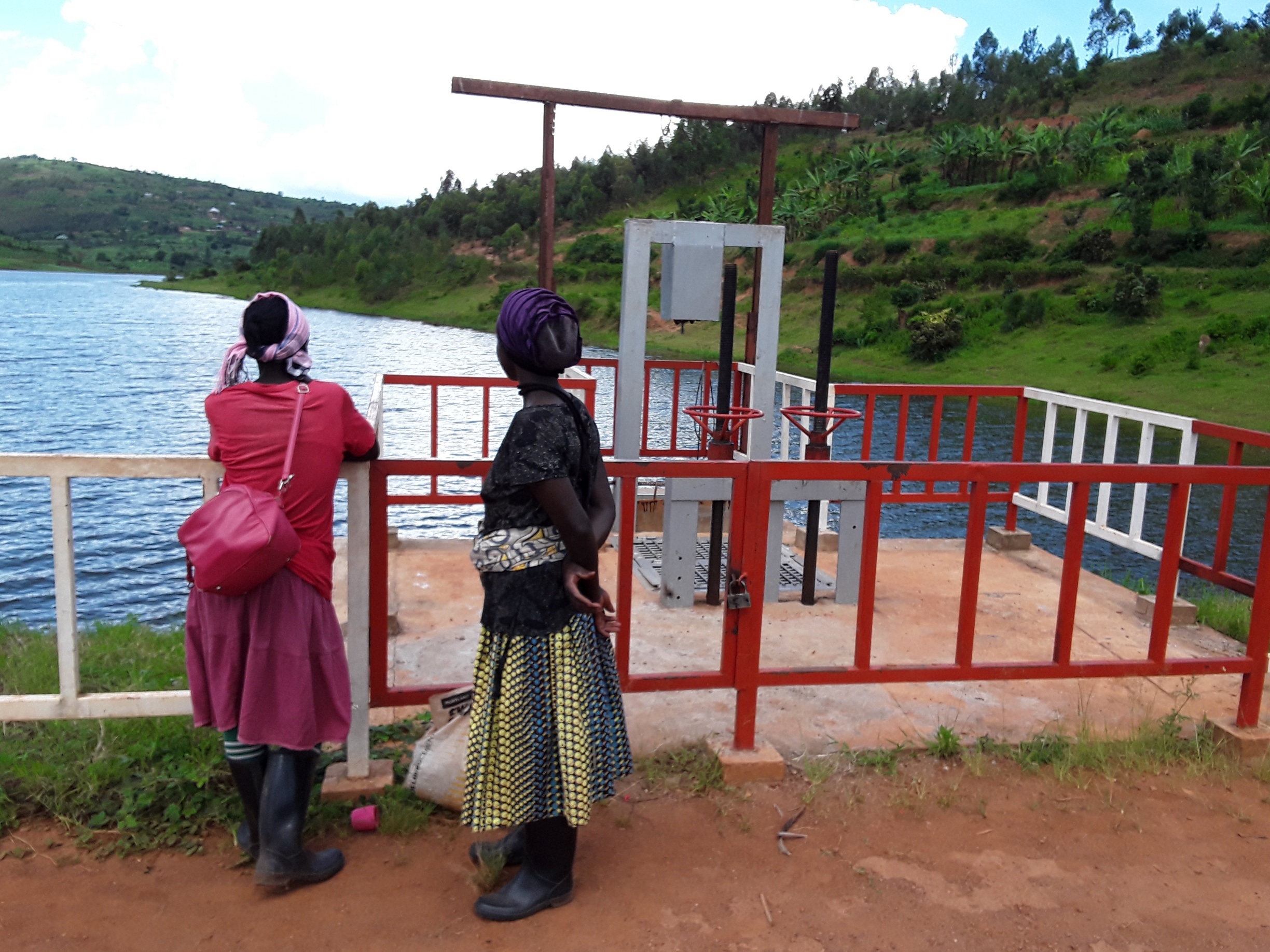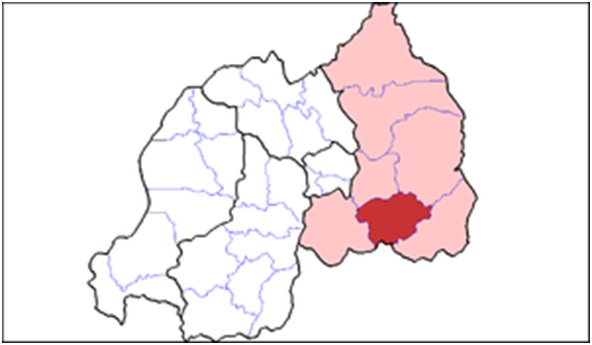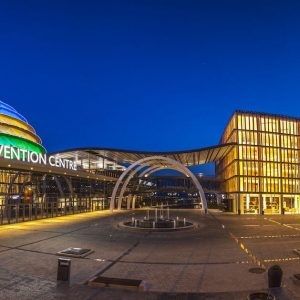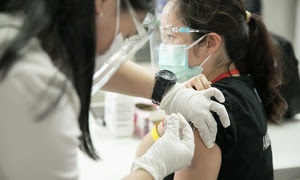By Diane MUSHIMIYIMANA
This work was produced as a result of a grant provided by IHE Delft Global Partnership for Water and Development through Water Journalists Africa network.
Cooperatives members in agriculture sector are thankful to have enough water for irrigation and cattle. Thanks to a multibillion irrigation project also toward ICT in agriculture being developed in the marshland, in Rwamagana District, Eastern Province.
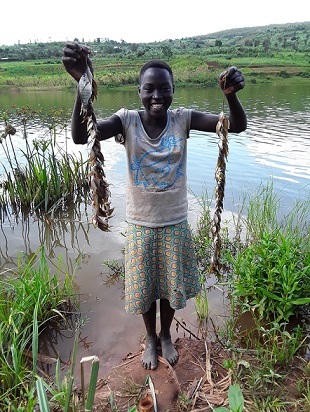
and knowledge base of staff of MINAGRI.
Sand rivers are huge water retaining structures, during the season of low rainfall; the storage water can be used for agricultural purposes.
This stored water is also helpful in case of fish agriculture. Due two huge storage of water, it passes down to underground water streams and increases the water level.
Rugende marshland that straddles three districts of Kicukiro, Gasabo and Rwamagana, was developed and used for multiplication of maize seed, cultivation of rice, vegetables and growing fodder
for cows.
Francine Uwamahoro, a farmer in Rugende marshland, Rwamagana said “Fish and vegetable farming technologies, sustainable fish farming, also enables these women to manage their own intake of this fish and that of their children and other family members.the small fishes also have high protein, like the Isambaza (Limnothrissamiodon) etc.”
According to Rwamagana district, Fish farming has become the main focus for most residents after realizing the profits that come with the business. Fish farmers say the alternative farming was them fetching them good profits. However, fishing in Rwanda has remained artisanal; by smallholder fishers and farmers. “The Country has very good potential for increased fisheries productivity which if commercialized in approach and linked to sectors such as tourism together with enabling policy which can stimulate increased fish production for both local and regional markets.
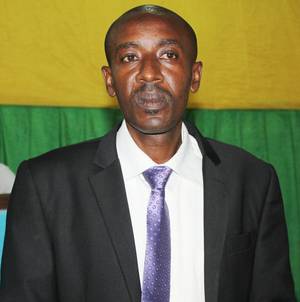
Rwamagana District Mayor Mbonyumuvunyi Radjab said “Sand Rivers are huge water retaining structures, useful for agriculture during the season of low rainfall; the storage water can be used for agricultural purposes. This stored water is also helpful in case of fish agriculture. Due two huge storage of water, it passes down to underground water streams and increases the water level. “Agriculture yield will benefits many not only locals but also foreigners. Based on sand rivers project, in these marshlands rice production will increase, as expected. While in Rain period at hector, yield was 4.1t/h, therefore we expect that sand rivers will increase yield to 5.4t/h .Also, during Sun period rice production was 3.4 t/h, it increase perhaps to 5 t/h. farmers have enough water for modern irrigation, and are urged to contribute on sustainable maintenance for all Sand Rivers infrastructures. Mayor Mbonyumuvunyi added.
Emile Ruzibiza, head of department of irrigation, land husbandry, research and technology transfer at Rwanda Agriculture Board (RAB) said “When you look at Agriculture production, wasn’t really significant since 2009, currently productivity increases, as well as modern irrigation has really boosted agriculture productivity. You can find many Sand Rivers in the Eastern Province, Sand River maintenance, canal management which is paid by cooperative after harvest, approximately. Job created, the different high value crops, like spices, maize, fruits, vegetables, etc. Agriculture has benefitted farmers. Productivity has increased self reliance and production for household, market and export .also more investors toward agriculture sector. People are not suffering from hunger. Even agriculture yield increased. High value crops exported outside, making more supply”.
The Rwf 2.2 billion project is under the third phase of the Rural Sector Support Project (RSSP3) under by the Ministry of Agriculture and Animal Resources, according to Francine Tumushime, the project co-ordinator at the Agriculture ministry. Completed Sand Rivers will help
farmers to receive sufficient water to irrigate their crops throughout the year. This is expected to increase land productivity and improve household income for farmers.She said that
Rugende marshland project is designed to enhance rice and horticulture production, as well as fodder growing.
“The works will include land excavation, and construction of drainage networks and other irrigation infrastructure. It will cover more than 400 hectares of land, under the project; farmers will be equipped with modern farming skills to ensure sustainable and proper utilization of the marshland..” Tumushime added
“The ultimate goal of developing marshlands across the country is to transform the country’s agriculture sector and increase production, Sand River with capacity to store 1,350,000 million cubic meters of water, the 13.50-meter high dam is expected to
irrigate 385 hectares throughout the year. Will ensure availability of irrigation water to allow farming activities in the marshland throughout the year, especially during the dry season. She noted. According to USAID, Rwanda has made significant progress in the fight against malnutrition. Between 2010 and 2015, rates of chronic malnutrition among children under 5 years ,known as ‘stunting’ decreased from 44% to 38%.However,the current rates are still high, and the country is commits to reduce stunting 19% in 2024.
Rugende marshland will cater for, mainly, three agriculture components; 140 hectares will be used for rice farming, 130 hectares for fodder production, while the remaining 115 hectares have been allocated for cultivation of vegetables Farmers in Rugende have since been grouped into self-help groups and some in the cooperative to ensure
guided and proper utilisation of the water for maximum gain.
According to the (MINAGRI),The World Bank funds to Sand Rivers Projects in Rwanda. Strengthen the skills and knowledge base of staff of MINAGRI and its agencies (RAB etc.) in several priority areas. 21 Ministry and agency staff obtained master’s degrees in India in various specialties relevant to the Project: horticulture, agri-business, irrigation, harvest handling,
commercialization and market exchange, as well as rural banking and ICT in Agriculture. Building the capacity of public extension services was a key factor to the success of Twigire Muhinzi, a pluralistic extension model. Equally important, the positive experience with radical terracing turned Rwanda into a role model for other countries in the region (e.g. Kenya, Burundi, Ethiopia, Madagascar, etc.

and knowledge base of staff of MINAGRI.
